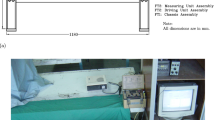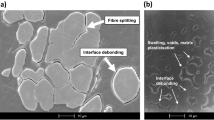Abstract
Several test specimens have been proposed for obtaining adhesive-fracture energy, γa, in bond systems. These tests include blister, cone, lap-shear and peel tests. Peel tests have been used for many years to compare relative strengths of different adhesives, different surface-preparation techniques, etc. This paper demonstrates the potential use of peel tests in obtaining γa values.
There are several reasons for devloping the peel test for fracture-mechanics work. First, most laboratories have facilities for preparing peel specimens. In addition, the adhesivefracture energy has recently been shown to be a function of loading mode. In peel tests, various combinations of Mode I and Mode II loadings can be applied by varying the peel angle.
Peel-test-analysis methods discussed include closed-form solutions for particular peel-specimen geometries loaded with a given force and numerical techniques for general peel-specimen analysis.
This paper also points out the difference between debond load and maximum peel load. The debond-load to maximum-load ratio is shown to depend upon adhesive type but independent of load rate over three decades of time for two different adhesive systems tested.
Similar content being viewed by others
Abbreviations
- A :
-
cross-sectional area (m2)
- a :
-
debond length (m)
- E :
-
modulus (Pa)
- G c :
-
critical energy-release rate
- p :
-
applied load (N)
- p cr :
-
critical load (N)
- U :
-
stored energy (J)
- W :
-
work (J)
- ω:
-
width (m)
- Γ:
-
total fracture energy (J)
- γa:
-
adhesive-fracture-energy density (J/m2)
- Δ:
-
increment
- θ:
-
peel angle measured from the plane of the specimen (deg)
- λ:
-
extension ratio (m/m)
- ε:
-
strain (m/m)
References
Engel, J. H. andFitzwater, R. N., “Adhesion and Cohesion,”T. Weiss, ed., Elsevier, Amsterdam, 89–100 (1962).
Griffith, A. A., “The Theory of Rupture,” Proc. of the 1st Int. Cong. of Appl. Mech., 55 (1924).
Williams, M. L., “Stress Singularities, Adhesion and Fracture,” Proc. of the 5th US Nat. Cong. of Appl. Mech., ASME, 451 (1966).
Anderson, G. P., DeVries, K. L. andWilliams, M. L., “The Influence of Loading Direction Upon the Character of Adhesive Debonding,”J. of Colloid and Interface Sci.,47 (3),600 (1974).
DeVries, K. L., Williams, M. L. andChang, M. D., “Adhesive Fracture of a Lap Shear Joint,”Experimental Mechanics,14 (3),89–97 (Mar.1974).
Trantina, G. G., “Combined Mode Crack Extension in Adhesive Joints,”J. Comp. Mat.,6,371 (1972).
Irwin, G. R., “Treatise of Adhesion and Adhesives,”R. Patrick, ed., Marcel Dekker, Inc., New York, 1 (1969).
Bennett, S. J., “Adhesive Fracture in Viscoelastic Materials,”PhD Diss., Dept. of Mech. Eng., University of Utah, Salt Lake City, UT (1973).
Hata, T., Gamo, M. andDoi, Y., “Mechanics of Peeling. 1. Peel Equation Derived on the Consideration of the Work of Elongation of Film and Its Experimental Examination”Kobunshi Kagaku, 22, 152 (1965).Che. Abs., 64, 6833 (1966).
Anderson, C. P., “Applied Adhesive Fracture Mechanics,”PhD Diss., Mech. Eng. Dept., University of Utah, Salt Lake City, UT (June,1973).
Martin, H. C., “Large Deflection and Stability Analysis by the Direct Stiffness Method,”NASA Technical Report No. 32–931, Jet Propulsion Lab, Calif. Inst. of Tech., Pasadena, CA (Aug.1966).
Zienkiewicz, O. C., “The Finite Element Method in Engineering Science,” Second Ed., McGraw-Hill Pub. Co., Inc. (1970).
Schkade, A. F., Jr., “A Refined Axisymmetric Fine Element for the Analysis of Nearly Incompressible Solids,”PhD Diss., University of Texas, Austin, TX (1970).
Dunegan, H. L., Harris, D. O. and Tatro, C. A., “Fracture Analysis by Use of Acoustic Emission,” J. Engl. Fract. Mech., 1 (1968).
Gerberich, W. W. andHartbower, C. E., “Some Observations on Stress Wave Emission as a Measure of Crack Growth,”Int. J. of Fract. Mech.,3,192 (1967).
Gardon, J. L., “Treatise on Adhesion and Adhesives,”R. Patrick, ed., Marcel Dekker Inc., New York, 1, 267 (1967).
Author information
Authors and Affiliations
Rights and permissions
About this article
Cite this article
Anderson, G.P., DeVries, K.L. & Williams, M.L. The peel test in experimental adhesive-fracture mechanics. Experimental Mechanics 16, 11–15 (1976). https://doi.org/10.1007/BF02328915
Issue Date:
DOI: https://doi.org/10.1007/BF02328915




